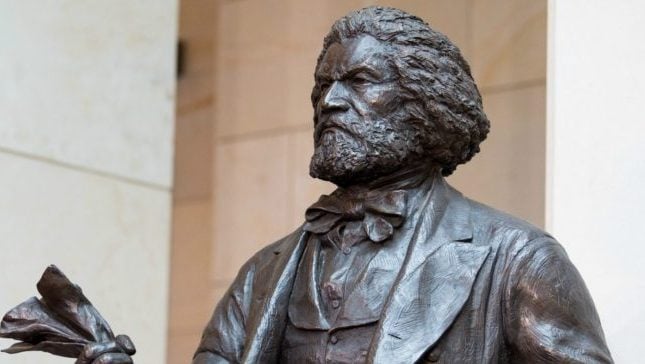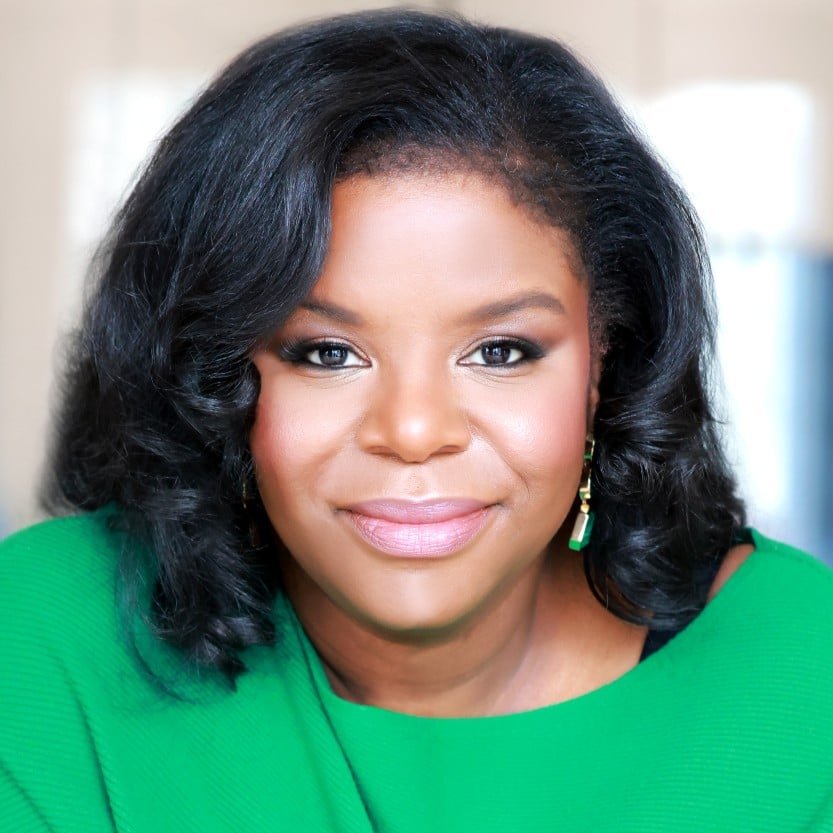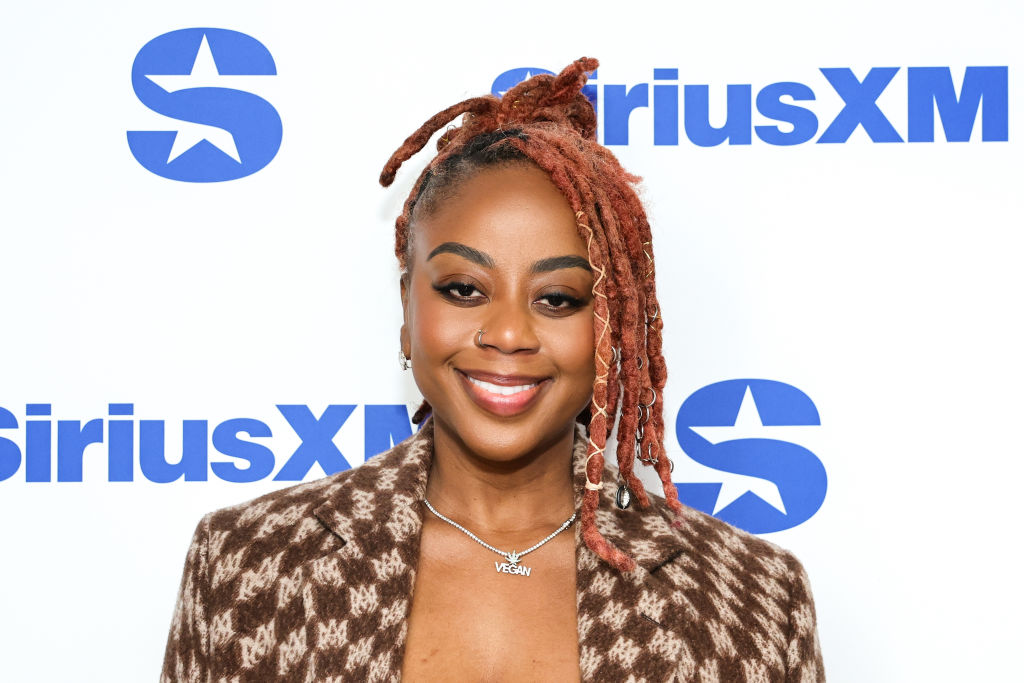PragerU’s whitewashing of Frederick Douglass is exactly how you indoctrinate children with falsehoods about Black history
OPINION: The conservative media company's videos have been approved for use in Florida classrooms. But the videos are nothing more than political propaganda. The post PragerU’s whitewashing of Frederick Douglass is exactly how you indoctrinate children with falsehoods about Black history appeared first on TheGrio.

OPINION: The conservative media company’s videos have been approved for use in Florida classrooms. But the videos are nothing more than political propaganda.
Frederick Douglass was brilliant, rising from enslavement to become the foremost abolitionist and Black statesman of his day. He was also not one to be played with. Born into bondage in 1818, Douglass had been leased by his slaveholder to a man named Edward Covey. Known as a slave breaker, Covey was tasked by slaveholders to break the spirits of the enslaved people he controlled. Covey tried to “break” Douglass by tying him up and beating him mercilessly. After a coincidental visit with the local root doctor and conjurer, a skeptical Douglass was gifted with a root said to be so powerful, it would prevent him from being beaten ever again. Perhaps imbued with the spiritual power tucked in his right pocket, he fought off the slave breaker’s next planned assault, grabbing his throat and then fighting off the other enslaved people commanded to suppress him. Struggling for more than two hours, Douglass was the victor of that battle and was never whipped again.
Douglass was just as fierce in his fight for Black equality as he was for the abolition of slavery. So, it’s bizarre that PragerU would choose the fiery and outspoken Douglass as a mouthpiece for slavery apologia. If you have a child, and you’ve ever looked online for content to supplement their history lessons, you’ve probably seen PragerU. They produce videos that look and sound a lot like standard children’s public television with bright colors and historical figures depicted in cartoon style.
But PragerU is not what it seems. Don’t let the U fool you; Prager is not an accredited campus nor even a school; it’s a conservative online media company with a distinctively political, and often, ahistorical point of view. Its founder Dennis Prager, a conservative radio talk show host set out to contest what he perceives as an erosion of “American values” in mainstream children’s media and created an online video series that promotes a range of right-wing culture war talking points as historical truth. From anti-vaccine rhetoric to climate change denial, PragerU has it all. This agenda isn’t even particularly well-hidden. When asked if PragerU Kids videos are indoctrinating kids, Dennis Prager asked, “What is the bad of our indoctrination?”
“The bad” is that the videos have gone from simply supplementing the curriculums of conservative homeschoolers to being approved for classroom use by the state of Florida, led by the reactionary conservative Gov. Ron DeSantis. The governor, who has staked his campaign for president firmly in today’s culture wars with what he terms “woke” education as his favorite target, has banned open discussion of racism and racial bias in Florida schools. This past January, Florida officials led by the governor declared that the Advanced Placement African American Studies course — a course created by a commission of leading academics from around the nation and administered by the College Board — was not “historically accurate” and “significantly lacks educational value.” While the AP course has been marked as lacking value, ahistorical content like the PragerU videos has been approved for classroom use. It is particularly rich to see that the Florida Department of Education has declared openly polemic videos such as “Leo & Layla’s History Adventures with Frederick Douglass” as appropriate.
In the PragerU Kids video on Douglass, the series’ protagonists, a young, white, time-traveling brother and sister duo, Leo and Layla, are confused as they watch news reports of contemporary protests against racial violence. Upon hearing that activists are calling to abolish the police, they type the word “abolish” in their time-traveling smartphone, and it autocorrects to the word “abolitionist” and sends them back to 1852 and a bobble-headed cartoon version of Frederick Douglass.
After the kids compliment Douglass on his “cool hair,” he quickly runs through a sanitized version of American slavery that downplays race and fails to account for the wealth and power accrued by white slaveholders. Prager’s Douglass does condemn slavery in the most vague and deracialized terms saying, “I want slavery to end.” He explains to the time travelers that “at this time … it is OK for some people to own other people,” failing to mention that it is white people holding Black people in intergenerational bondage. Prager’s Douglass defines slave labor as making them “work many hours for no pay,” and forcing “them to do anything, anytime.” The video fails to mention that enslaved people’s labor built much of the infrastructure and agricultural capacity of the nation.
When the children express mild distress at the injustice Prager’s Douglass has described, he quickly pivots, explaining that “slavery has existed everywhere in the world for thousands of years.” Skipping over the horrors the real Douglass personally experienced and his escape from bondage, Prager’s Douglass simply said it was “very hard” and “often sad” being a slave. Pivoting yet again, he speaks about his quest for literacy, “I taught myself to read and write, and as I always say, ‘Knowledge is the pathway from slavery to freedom.’”
This paraphrased quote, one of the few used in the video, is in reference to the real Douglass’ account of being punished after his slaveholder’s wife, Mrs. Auld, taught him the ABCs as a child. In response to discovering the illegal lessons, Mr. Auld said to his wife, “If you teach that nigger how to read, there would be no keeping him. It would forever unfit him to be a slave.”
Douglass reflected that “from that moment, I understood the pathway from slavery to freedom.” For Douglass, education was a weapon for resistance and possible escape. A literate slave could read newspaper accounts, look for opportunities to exploit moments of chaos or turmoil, intercept mail, create passes to freely travel or teach others clandestinely, as Douglass did, spreading seeds of resistance throughout the community. Out of context, it sounds like an enjoinder to do your best in school.
Prager’s Douglass does casually mention that he was “regularly beaten” but fails to share who did the beating and why. Then perhaps the most profoundly misleading statement in the video, Prager’s Douglass says he had “had enough” and escaped to the North and that “he never looked back.” In reality, Douglass’ entire life’s work as an abolitionist was about “looking back,” fighting for the liberation of those still in bondage.
The video isn’t done with misleading its viewers. Prager’s Douglass goes on to say that the founding fathers wanted slavery to end, “but their first priority” was to get the colonies to unite. Never does this version of Douglass mention that several of the founding fathers, most notably George Washington and the author of the Declaration of Independence, Thomas Jefferson, held hundreds of men, women and children in bondage. Asked by Layla if he is “OK” with the founding fathers favoring compromise over freedom, Prager’s Douglass mimics the stance of those once moderate on the questions of slavery, explaining that he’s “certainly not OK with slavery,” but that compromise was necessary “to achieve something great, the making of the United States.” Pretending that Douglass favored the compromise that forced him and millions of others to be born in bondage, is the video’s abhorrent low. In real life, Douglass was uncompromising in his urgent determination to end slavery. He gave his whole career over to the cause.
In the hands of Prager’s storytellers, freedom-fighting Douglass disappears and is replaced with a figure who is sympathetic to the challenges facing slaveholders. This version of Douglass doesn’t inform the time travelers about his accomplishments or the things he survived but rather states that every society had some form of slavery and that we ought to take people in the context of their times, standard excuses for the peculiar institution of slavery trotted out for decades.
This bold reinterpretation of history isn’t based on any new research; it’s political propaganda. The real story of what America’s foremost abolitionist accomplished in his lifetime is a wonderful lesson to share with children. We can’t depend on the state of Florida to tell the story of Douglass or other Black Americans deserving of remembrance. We probably never could. I, for one, believe that we need to stop waiting for the right thing to happen and start strategizing about how to teach children how to discern lies as they come. Let’s prepare our children to be critical thinkers, prepared for the next culture war. Douglass would tell us to be ready for the fight.

Blair LM Kelley is the Williamson Distinguished Professor of Southern Studies and the Director of the Center for the Study of the American South at the University of North Carolina-Chapel Hill. Her latest book is Black Folk: The Roots of the Black Working Class (Liveright/W. W. Norton and Co.).
TheGrio is FREE on your TV via Apple TV, Amazon Fire, Roku, and Android TV. Please download theGrio mobile apps today!
The post PragerU’s whitewashing of Frederick Douglass is exactly how you indoctrinate children with falsehoods about Black history appeared first on TheGrio.












